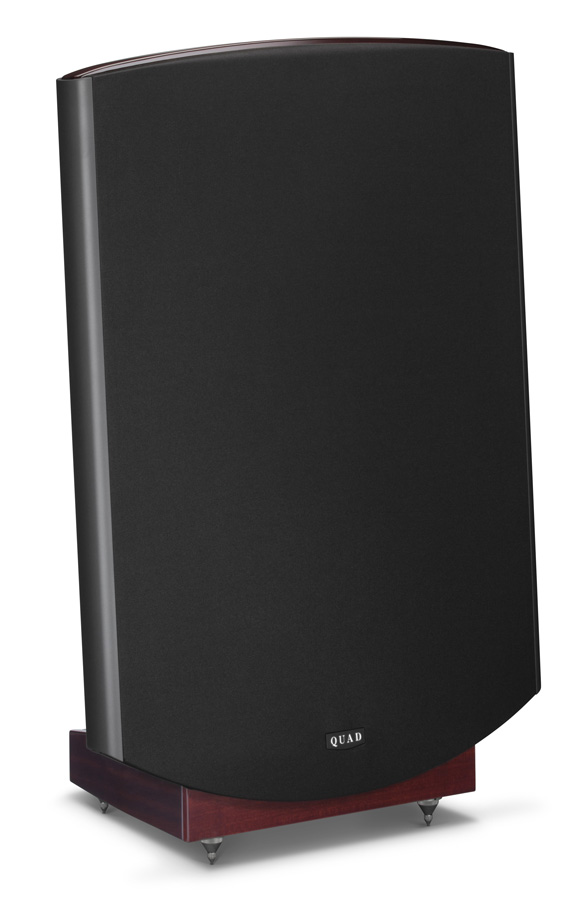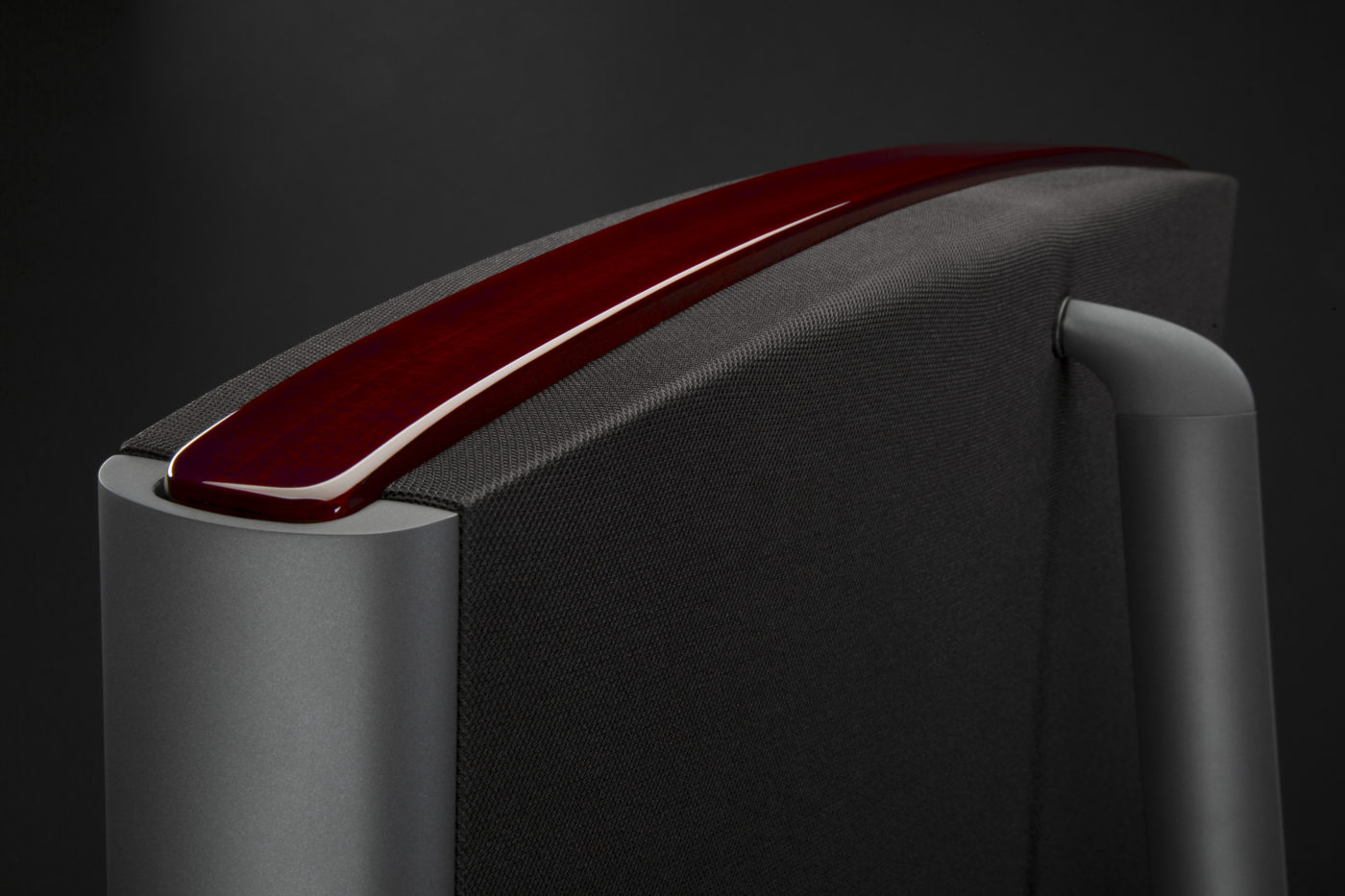I have been a member of the superblastophile group all my life, turning up the volume to reap as much dynamic realism and low-level details as possible. Whether it was with the Tannoy Churchill Wideband in 2003, the Tannoy Westminster Royal SE or as recent as the Magnepan 3.7i, high listening volume was the norm in my listening sessions and subdued level was the occasion. For the audiophile standard is to replicate the sound and realism of a live performance, resulting in the push by speaker manufacturers to develop behemoth designs capable of reproducing frequency extremes faithfully at outlandish decibels. The $12k pair of the Quad 2812 electrostatic speakers, delivered to me by Jon Derda and Norbert Schmied of MoFi Distribution, is a purveyor of a very different way of music listening.
The British loudspeaker hails from the 1950s and is the original article among its competitions to this day. Promising to represent “the closest approach to the original sound,” each 2812 unit is consisted of four radiating elements, with the two center elements utilizing Quad patented delay-line technology. Each panel comprises two charged stators, front and back, housing and controlling a thin sheet of Mylar only one-tenth the thickness of a human hair. Five kilovolts of Extra High Tension charge are sent to the stators to control the Mylar’s movements.
The stators themselves are an engineering marvel. They are a thin copper layer, punched with holes for sonic transparency and tripled sprayed with a specifically formulated, high-resistivity coating for supposedly high dynamic playback conditions. These stators are powered by an onboard power supply drawing very likely from Quad’s own amplifier designs, employing select components such as high-grad C-core transformers, Vishay resistors and Murata capacitors.
Whereas previous Quad ESLs were known to be susceptible to malfunctioning in humid climates, a host of new design parameters such as symmetrical PCB layout that also offers optimum insulation and superior cable dressing are put in place to ensure operability in the more humid region of the world. Visibly, two stators are arranged in the center of the speaker to radiate and spread from the center , creating, supposedly, a spherical radiation pattern with a slight high-frequency delay that gives the Quad ESL its legendary point-source characteristic, resembling real-life sounds.
Auditioning
Jon and Norbert set up the Quad 2812 in my 14′ x 27′ x 9′ sound room. Per Jon, the Quad needed to be no more than 52 inches away from the front wall so as to preserve the bottom-end. Their final positions after a few days of ongoing auditioning placed the speakers a few inches further away from the front wall for added presence; the bottom-end, as foreseen by Jon, was diminished minutely but still potent.
For my analog system, a $8,900 Fuuga moving-coil cartridge mounted on a $3,600 SME Oracle 345 tonearm over a vintage Kyocera PL-910 turntable fed the $45k Pass Labs Xs Phono via a $10,800 Stealth Audio Cables Helios phono cable. The digital source was via the Esoteric K-03 SACD player/USB DAC with the G-01 rubidium clock when playing discs. A Bricasti dual-mono DAC handled USB signals from my computer. The signal was then sent to a $38k Pass Labs Xs Preamp, which drove a pair of the Pass Labs XA200.8 monoblocks via the MIT Oracle XLR. A pair of the MIT Cables Oracle speaker cables drove the Quad 2812.
The Fuuga was the only cartridge offering by 47 Labs at the time of writing and it was spectrally more detailed and tonally more open-sounding than the discontinued Miyabi/47. The 1.5m, $11,200 Stealth Helios was the ultra-performance phono cable whose ability to compliment the prowess of the Fuuga could not be overstated.
In my listening room, the sound of the spherically radiating electrostatic technology was the most holographic among speakers I’ve experienced; the degree of the Quad’s spatiality surpassed even that of the Magnepan 3.7i. Playing the Mobile Fidelity Sound Lab Gain 2 Ultra Analog 45rpm pressing of the Miles Davis Kind of Blue, instruments such as Davis’ trumpet attained superb separation from each other, acquiring eye-popping three-dimensionality as to be a tremendously rewarding auditory experience. The Bill Evans piano was endowed with full body spatial presence, while percussions and horns alike off-stage left and right possessed haunting solidity.
In sense of scale, however, the Quad was not as rambunctious as the Magnepan or the Tannoy.
Nonetheless, the Quad boasted solid and concise bottom-end. In rendering bass instruments, be it electric as in “Another One Bites The Dust” on digital or the double bass in the aforementioned MoFi 45rpm, the Quad was considerably more articulate and substantial than the Magnepan. The Quad’s remarkable tunefulness lent superb definition to the portrayal of the instruments.
- (Page 1 of 2)
- Next page →



You should have reviewed the Sound Lab U-4iA (now U-545) with the same ancillary equipment. The SL deserves the best and it reveals subtle difference among equipment like no other speaker I have ever had. A compare and contrast from you would have been useful. The Sound Lab does not run out of gas like the QUAD, for example. Perhaps you could request a sample, do a listen yourself, and publish your impressions?
Dear William,
Thank you for your readership and suggestion. The Sound Lab U-4ai or U-545 has been reviewed by senior reviewer Doug Schroeder in January, 2017: https://www.dagogo.com/sound-lab-ultimate-u-4ia-electrostatic-speaker-review.
Nonetheless, regarding the performance aspects of the Quad 2812, I’m sure some will consider its uniqueness more favorably than other readers. “Running out of gas” is a characterization that points to: 1. a mismatch between the speakers and the listener’s preference, and 2. a subjective contrast between two products of differing performance parameters. While I’m sure my assessment and criticism of the Quad 2812 may not be as relevant to those who swear by them, expecting a product to perform in any way counter to the intent of its design is counter-productive. Just my two cents.
Sincerely,
Constantine Soo